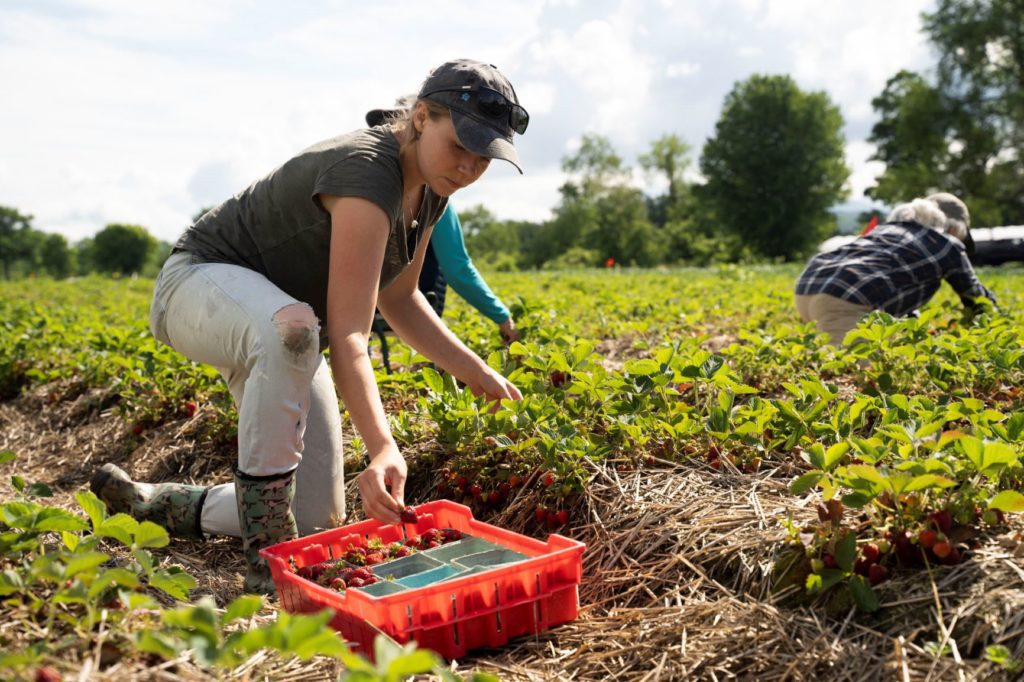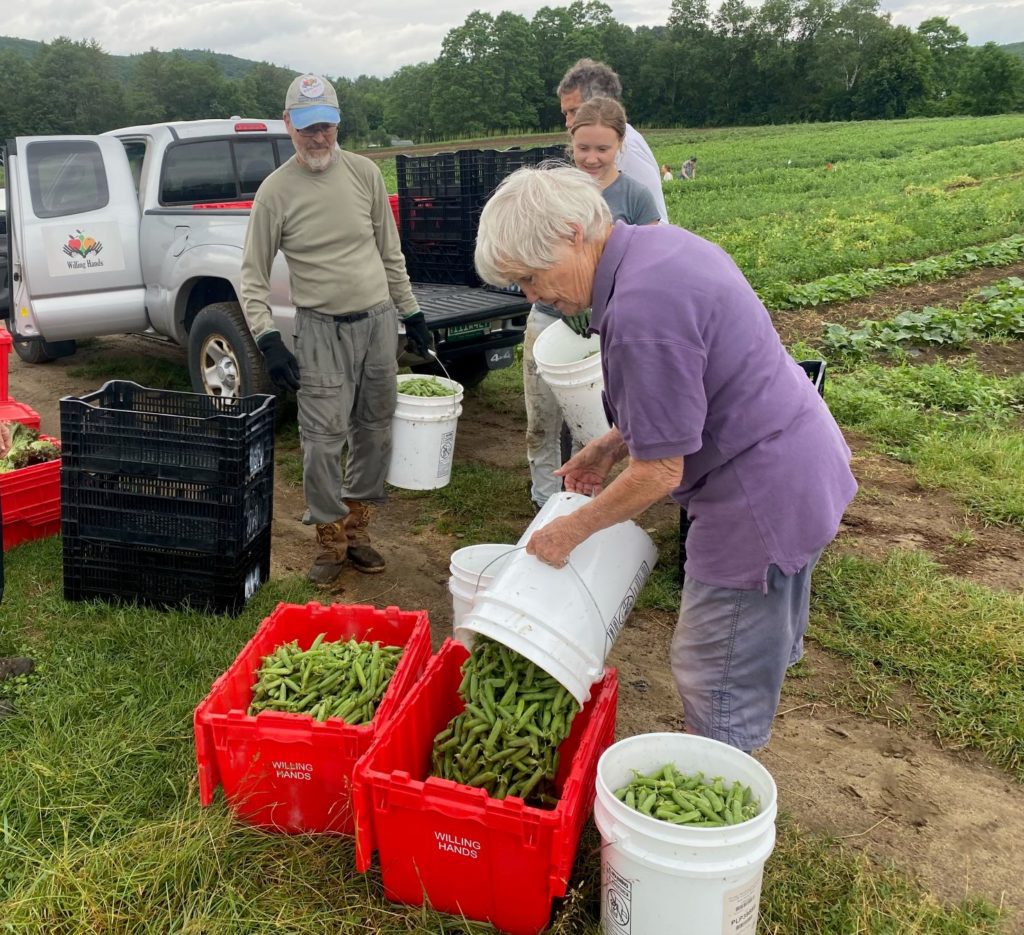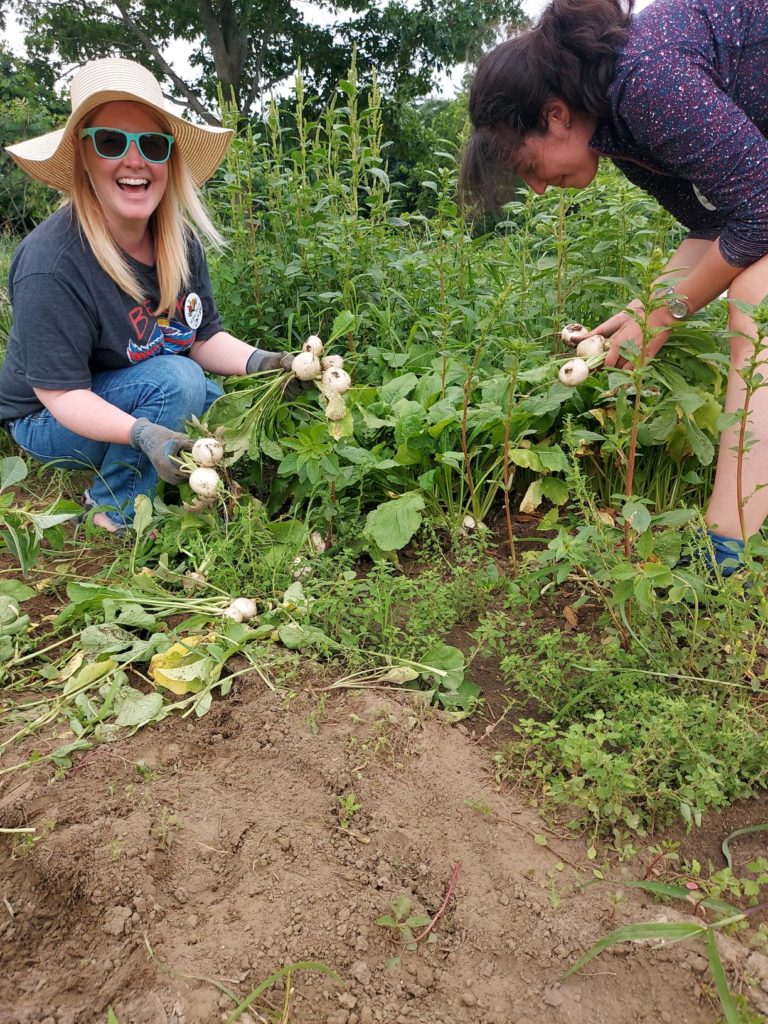What is Gleaning, Anyway?
It’s no secret that the Upper Valley has a lot of farms. Vegetables, fruit, meat, eggs–you name it, we’ve got it. (Okay, except citrus. Oh well.)
All of these farms work hard to plan their growing seasons. But unsurprisingly, it’s difficult to plan exactly how much produce to grow or meat to raise when there are so many unpredictable factors like weather, market demand, and pandemics. It’s pretty common to have produce left over after the harvest.
Farmers have been making this surplus available to their communities for thousands of years. The old testament instructs farmers to leave the perimeter of the fields unharvested, and to refrain from harvesting produce that has fallen to the ground, to allow poor or landless people to eat it. Gleaning–the practice of gathering leftover produce after the harvest–was a customary right in England until the end of the 18th century.
Fast forward nearly 250 years, and gleaning is still around today. It looks a little different–we don’t usually wear petticoats or bonnets while harvesting broccoli, and we always ask permission from the farms–but at the core, the principle remains the same: everyone, regardless of economic status, deserves to eat fresh food.
In 2008, with the blessing of a small handful of local farms–Crossroad, Edgewater, and Cedar Circle–Willing Hands began gleaning. Carolyn Frye, one of the founding members of the gleaning program and a Willing Hands board member, laughs as she remembers the early days: “We used to round people up by calling them on the phone.” Small crews of about four volunteers harvested the produce and weighed it using Frye’s home scale.



Today, dozens of farms generously make their fields available to Willing Hands gleaning crews. Frye says gleaning offers a unique opportunity for volunteers to engage with local farms on a deeper level. “So many people have never walked the fields,” she says. “They may have been to a farm stand, but they’ve never seen the farm operations.”
Volunteers echo this sentiment, emphasizing the opportunity to spend time at dozens of beautiful farms while directly reducing hunger in our community. “I want to actively help with the issue of hunger, and working at ‘ground zero’ seems like a good place to start,” one volunteer says.
The impacts of gleaning are not just local. Gleaning is an important tool in the fight against climate change. By utilizing food that has already been produced, we reduce demand for additional food production. A study conducted this spring by the Dartmouth College Environmental Studies Department found that our work–including food recovered from farms, grocery stores, and businesses–prevents about 1 million pounds of carbon dioxide from entering the atmosphere each year. That’s the equivalent of taking nearly 100 cars off the road.
Regardless of what draws volunteers to the fields, they often leave with a shared sense of accomplishment. Roberta, a longtime volunteer, says, “I can’t tell you how good it is to see the truck filled with produce pull away at the end of a glean.”
